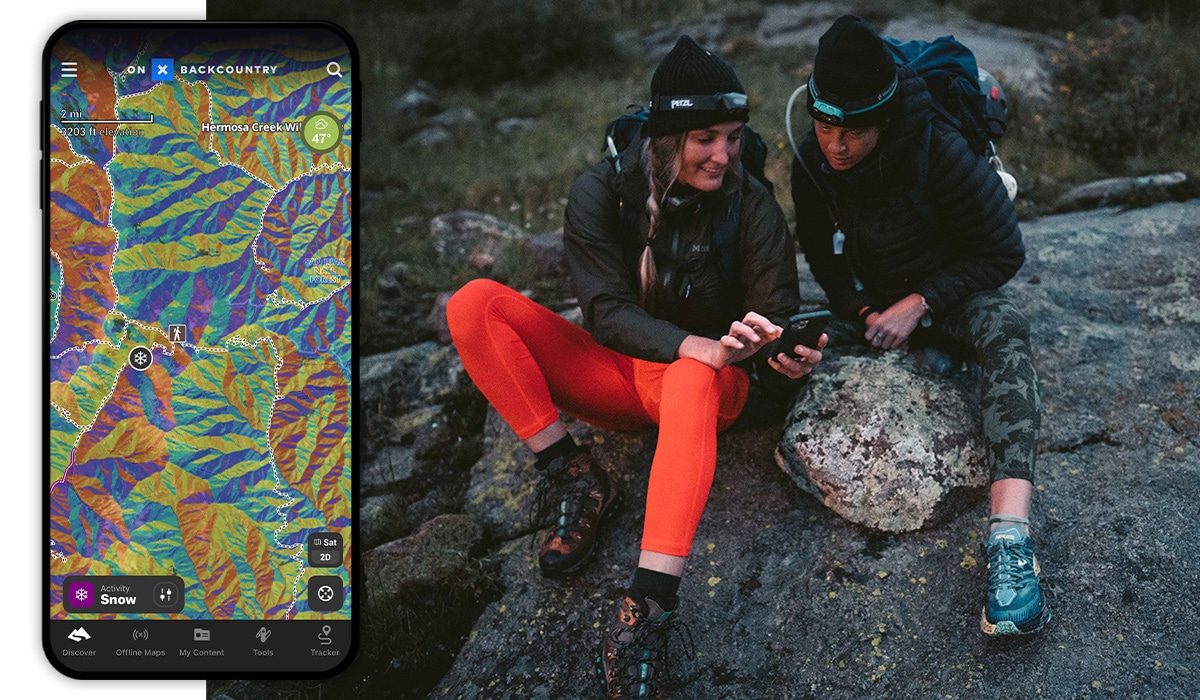How To Responsibly Recreate During Mud Season
Spring is an exciting time in which the days get longer, stretching our legs becomes easier, and we start to trade in ski boots for hiking boots. Amidst all of this excitement it might be tempting to hammer out some trail miles, however spring also yields the most delicate time for our precious flora and fauna.
All That Water Has To Go Somewhere
Primarily, the mountain regions are beginning to experience the first stages of their runoff in April and May as the sun stays higher, longer, especially on south-facing slopes. It’s important to be cognizant that as you change where your slope aspect is on the mountain you’ll experience dramatically different conditions. Beyond just feeding the rivers in the valley below, this volume of water sends trails into a soupy mess. Trails soften allowing for footprints, both physical and metaphorical, to leave an exponentially larger impact.
Waterlogged trails present multiple problems for land managers. High traffic can divert water bars (or drainages) leading to expedited erosion. Additionally, things like social trails or walking around mud puddles can lead to widening paths and additional harm to the vegetation. Though deepening a mud-hole with more foot traffic is not ideal, it is the better alternative to going around. It’s easier to fix a concentrated rut than it is to reign back in a widening trail—go deeper, not wider.
How and When To Recreate (It’s Not All Doom and Gloom)
During mud season, there are a few things you can look for to mitigate your impact on the land. The first is to go out in the morning when the ground is firmer. This will help keep your footing more solid and slow erosion. By using the Slope Aspect Layer in Snow Mode, you can also understand that a primarily south-facing trail will warm and dry quicker, yet a north-facing slope still may hold snow—which, in some cases, may be easier to travel on if you’re properly equipped. Combine that with the Satellite Basemap to see what tree cover looks like because that also plays a factor in the drying of trails.
The second alternative is to find firmer surfaces like rock or a local greenway/rail trail like the East Coast Greenway or the Great Allegheny Passage. These are great ways to explore your backyard by foot, pedal-power, or with a four-legged friend.

What To Bring
If you’re going to head out during mud season, Leave No Trace’s Education Director JD Tanner wants you to “be prepared to get muddy.” There’s no getting around it, so just get ready for it. This means wearing gaiters, good sturdy boots (not necessarily for waterproofing, but for surefootedness), and a spare pair of socks. Continuing on the theme of stability, Tanner hikes with trekking poles because they allow him to feel more confident wading through a sizable mud section. For post-hike comfort, “I always keep a pair of sandals in the car,” says Tanner, “so that way I don’t feel the need to walk around mud holes.” In a similar vein, if you’re hiking with a dog, have a towel handy for when they inevitably come back with 10 extra pounds of mud on them.
Also: Just pick up your dog’s poop bag from the start, don’t leave it at the beginning of the trail. You’re going to forget it, and that stuff is nasty.
Have Luggage, Will Travel
For those in western states, consider heading to the desert. The dry temperate climate this time of year is a welcome reprieve from winter and take advantage before the summer heat settles in for the long haul. Those in eastern states can find what they’re looking for in southern states or by heading to the uncrowded beaches before Memorial Day marks the unofficial start of beach season.
Check With the Land Manager, Check the Weather, and Check Your Backup Plan
The first thing Tanner does before he even leaves the house for a hike is contacts the land manager of the trail he’s looking to hike. “Always contact the land manger number one, just to find out if the trail is even open. They’re also going to have the best idea of what condition the trails are in,” says Tanner.
The next thing to do is open onX Backcountry and check the Weather Forecast for the area in which you want to recreate. Make sure there’s no impending weather on the horizon, and toggle on Snow Mode quickly if you’re in a mountain state to see what the snowpack looks like using SNOTEL in the area you’re looking at.

The last thing is to have a backup plan. One of the greatest resources that we can provide is giving you a platform to house a library of options for you all in one place. onX Backcountry Ambassador Griffin Post says, “The beauty of onX is not just in its role as a primary navigator, but in its ability to house Plan B, C, and D. All of a sudden it becomes easy to have backups.” In mud season it’s paramount to have multiple options to choose from.
The last thing you can do to help responsibly recreate during mud season is to donate to your local land trust or volunteer at a trail day. This goes a long way to ensuring the longevity and sustainability of your local trails.